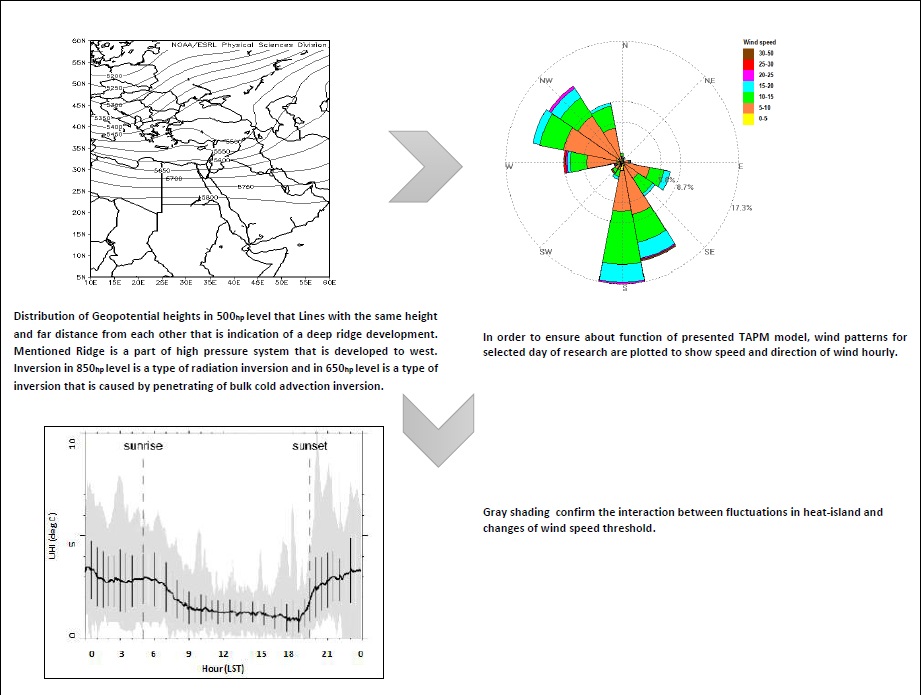BibTeX | RIS | EndNote | Medlars | ProCite | Reference Manager | RefWorks
Send citation to:
URL: http://ijaup.iust.ac.ir/article-1-207-en.html
2- Associate Professor, Faculty of Environmental Planning,Department of Physical Climatology,University of Sistan & Baluchestan ,Zahedan, ,
3- Department of Climatology , Faculty of Environmental Planning, University of Sistan and Baluchestan , Zahedan ,Iran.
This paper examines the utility of the air pollution Model (TAPM) in simulating meteorology and dispersion of PM10 and wind data in order to assess The Impacts of Wind Variability Function on Urban Heat Island for the day of 25, November,
2012 in Karaj city that experienced severe degradation in air quality. Drawing, Skew-T diagrams, maps of surface pressure (500hp), omega (850hp) and atmospheric conditions at 300 – 900hp level are used for analysis. Due to wind patterns, the air pollution behavior is simulated regarding to resolution of 5 km for output amplitude. Simulations of the PM10 and wind data in ten metric levels from three point of city are prepared according to synoptic conditions. Meteorology and PM10 dispersion results indicate that in spite of prevailed wind direction (West to East) in the mentioned day the effect of wind threshold on the air filtration is reduced and heat island formation is occurred as a result of reduction in air flow speed in urban areas. Therefore, it is essential to consider adopted strategies to mitigate urban heat islands such as the principles of bioclimatic architecture, urban morphology, urban infrastructure-related measures (architecture and land use planning) for urban planning.

Highlights:
- Todays, Urban Heat Island phenomena is one of main issue in Bioclimatic architecture studies.
- Applying the air pollution Model (TAPM) with pollution and wind data can help to simulate wind pattern in Karaj city.
- Survey of atmospheric conditions and synoptic map are essential for the principles of bioclimatic architecture.
- There is an severe degradation in air quality at November 25 that caused Urban Heat Island phenomena in Karaj.
| Rights and permissions | |
 | This work is licensed under a Creative Commons Attribution-NonCommercial 4.0 International License. |




